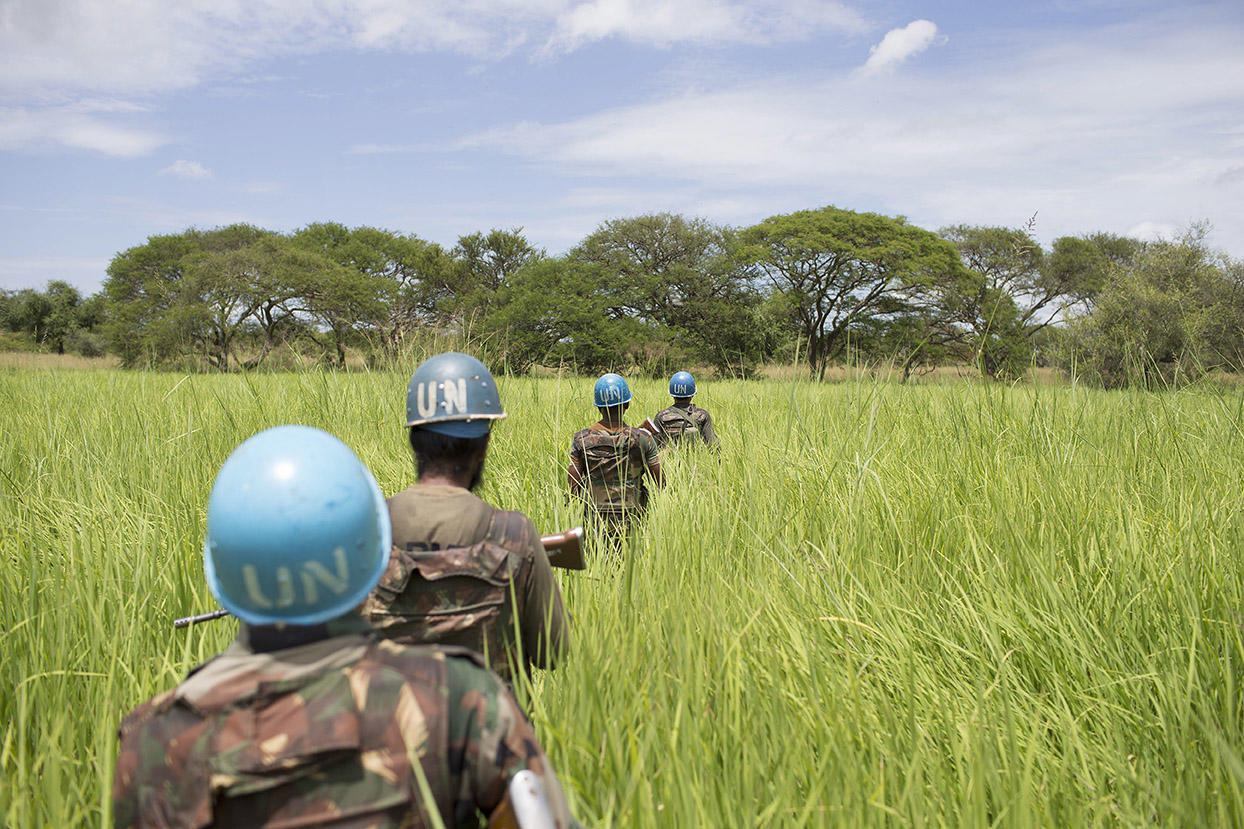Jacqueline H. Wilson, a senior program officer in USIP’s Academy for International Conflict Management and Peacebuilding, examines the current violence in South Sudan.

What is happening in South Sudan?
It is difficult to know all the details, as the situation appears very fluid, although reports indicated Dec. 18 and 19 were calmer in the capital Juba than the previous three days. Violence broke out in the capital over the previous weekend following a meeting of the National Liberation Council, one of the party’s decision-making forums of the ruling party, the Sudanese People’s Liberation Movement (SPLM).
South Sudanese President Salva Kiir has said the violence stemmed from a failed coup attempt after that meeting. Riek Machar, a former vice president to Kiir who has become his rival, denies involvement in any coup attempt. News reports about the violence in Juba give estimates of 500 deaths with many more injured and as many as 20,000 seeking shelter at United Nations facilities.
Are there any historical roots for these tensions?
That depends in part on how you perceive the violence. South Sudan, which became independent from Sudan after a referendum in 2011, has experienced conflict in multiple locations since then, including between different ethnic groups in Jonglei state.
There also has been political rivalry between Kiir, an ethnic Dinka, and Machar, a Nuer who was dismissed by the president in July, along with certain other cabinet members. Machar earlier this year had announced he would challenge Kiir for the chairmanship of the SPLM and, by extension, the party’s candidate for the presidency in the next election, scheduled for 2015.
Their split also reflects deeper and longstanding divides within the SPLM, dating back to a 1991 confrontation in southern Sudan before independence. Competing visions over the future of southern Sudan took on ethnic overtones and led to violent clashes, which also set back the independence movement for a time, until a landmark Dinka-Nuer reconciliation, known as the WUNLIT peace agreement, in 1999. Many political issues remain unresolved, compounding stresses on the new nation.
Importantly, some senior officials deny any ethnic overtones to the current violence, although others cite ethnic motivations for some attacks. Regardless of the political intention, reports – through social media, radio and by word of mouth -- that people are being targeted in the violence on the basis of ethnicity -- is creating fear and chaos and potentially sowing the seeds for additional attacks.
How is this crisis related to the other ongoing conflicts in South Sudan?
The violence appears to have spread outside of the capital, including to the eastern state of Jonglei, which has experienced repeated cycles of inter-tribal and ethnic clashes for years. The United Nations Secretary-General’s office has said at least 19 people have been killed in the state capital Bor. Indications of division among factions of the Sudan People’s Liberation Army (SPLA) have been reported in a number of other states as well.
How is the U.S. involved?
The U.S. Embassy in Juba suspended normal operations on Dec. 17 in the wake of the violence and recommended all Americans leave South Sudan. A day later, the State Department called on the country’s political leaders to “refrain from any action that could escalate an already tense situation or fuel the violence.” Deputy Spokesperson Marie Harf said, “It is absolutely critical that political differences be resolved by peaceful and democratic means.” Ambassador Susan D. Page met with Kiir and expressed U.S. concerns about the violence and the arrests of political opponents, according to the statement.
The U.S. has been a strong supporter of the full implementation of the Comprehensive Peace Agreement between Sudan and the SPLM that led to the referendum on independence and the establishment of Africa’s newest country in 2011. U.S., EU, and other international partners have provided humanitarian and development assistance to the new country. Earlier this year, the Obama administration proposed to Congress spending $330 million in direct foreign assistance for South Sudan for the fiscal year starting October 2013, a decrease of 8 percent from 2012, according to Devex.
What could be done to de-escalate the situation?
South Sudanese citizens and government officials have a robust set of traditions, customs, and peacemakers to draw from to ease tensions. Religious leaders tend to be widely respected across South Sudan, and a group of eight this week called for calm and reconciliation. Lessons from other contexts tell us that ethnicity can be easily manipulated to mobilize masses for violence, so it would be important for political leaders to avoid statements that could inflame already existing tensions. U.N. Secretary-General Ban Ki-moon has called for dialogue to resolve issues, as did Harf during a daily State Department press briefing on Dec. 18.
Explore Further
- USIP Special Report, Diversity, Unity, and Nation Building in South Sudan